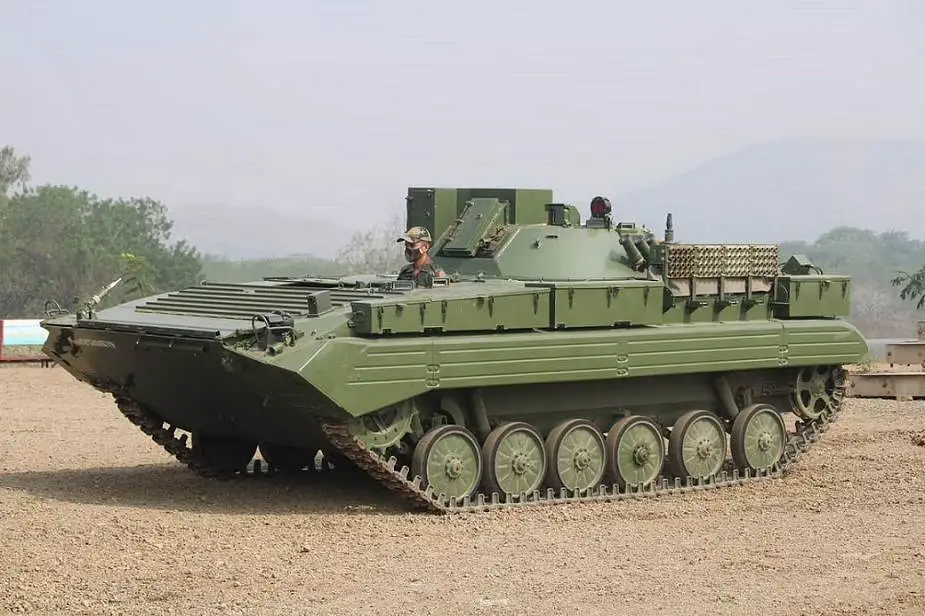New Armoured Engineer Reconnaissance Vehicle enters into service with Indian Army
According to information published by the Indian Ministry of Defense, new Indian-made Armoured Engineer Reconnaissance Vehicles (AERV) based on BMP-2 IFV (Infantry Fighting Vehicle) tracked armored chassis were inducted in the Indian Army's Corps of Engineers.
Follow Army Recognition on Google News at this link

The new Indian-made AERV Armoured Engineer Reconnaissance Vehicle. (Picture source swarajyamag.com website )
The new AERV (Armored Engineer Reconnaissance Vehicle) was officially inducted during a ceremony that was attended by the Indian Chief of Army Staff General Manoj Mukund Naravane. The vehicle has been designed by the Indian Defence Research and Development Organisation (DRDO) and was delivered to the Corps of Engineers of the Indian Army. The vehicle is manufactured by Ordnance Factory Medak & Bharat Electronics Limited (BEL), Pune
The Indian-made AERV is based on the Soviet-made BMP-2 tracked armored IFV (Infantry Fighting Vehicle). It keeps the original turret of the BMP-2 but without the 30mm cannon. The vehicle is fitted with instruments for water reconnaissance, land reconnaissance, navigation, and data backup.
According to our fir analysis, the AERV keeps the original BMP-2 IFV torsion bar suspension consisting of six road wheels with the drive sprocket at the front, idler at the rear, and track-return rollers. The first, second, and sixth roadwheel stations have hydraulic shock-absorbers. The upper part of the track has a sheet metal cover. The BMP-2 is fully amphibious and propelled in the water by its tracks at a maximum speed of 7 km/h.
The AERV has been designed to meet the tactical and combat requirements of military engineers carrying out terrestrial and underwater surveys in hostile terrains, primarily for the construction of assault bridges for both offensive and defensive operations.
According to BEL, the manufacturer of the AERV, the vehicle is capable of measuring soil bearing capacity on riverbanks to determine if they are usable for military vehicles on Go-No Go basis (critical parameters for bridge laying), dry and wet gaps in the day and night conditions, slopes and height of river banks or canals.


























